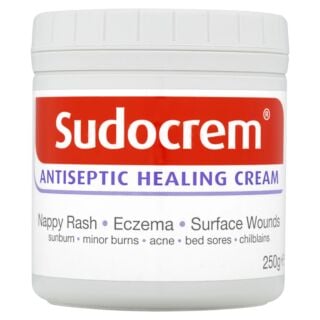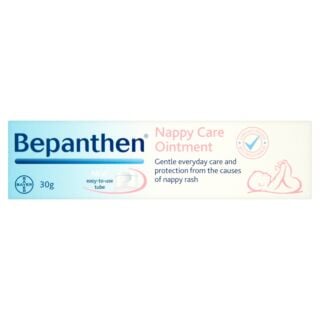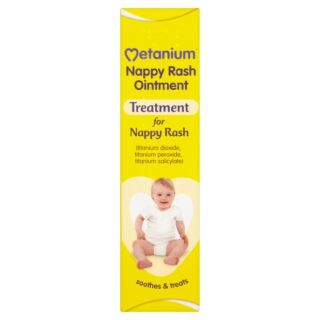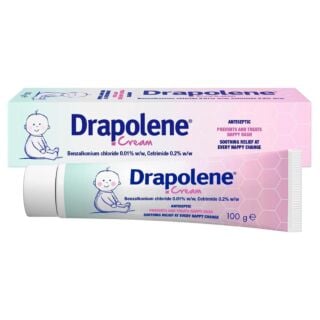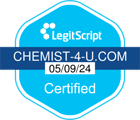The 4 types of nappy rash and how to treat it

Can you tell the difference between the different types of nappy rash?
ANSWER: There isn’t just one type of nappy rash. There are 4, and they all present different symptoms – this means they’ll need different treatments, too! There’s bacterial (the most common) and fungal nappy rash, as well as a rash caused by friction and those that are the result of an allergic reaction.
As much as you try to protect your little one from catching any nasty illnesses, infections or uncomfortable rashes, most babies will develop a nappy rash at some point during their nappy-wearing days. Don’t worry! Despite the rash looking red and sore, nappy rash can usually be treated at home.
But many parents (especially first timers!) are left in the dark about nappy rash, which is where this helpful guide comes in. In this guide we’ll teach you everything you need to know about nappy rash – the different types, symptoms, causes, treatment options, and how you can prevent it.
What is nappy rash?
It’s estimated that 1 in 4 babies will develop nappy rash at some point, making it extremely common. Although all nappy-wearing babies can get nappy rash, it doesn’t typically affect newborns.
Nappy rash can be caused by many different things, not just your baby wearing a dirty nappy for a prolonged period of time. It can be caused by:
- Your baby’s skin being in contact with their dirty nappy for a long time
- Their nappy chafing against their skin
- Certain soap, detergent or bubble bath - typically ones that aren’t designed with your baby’s sensitive skin in mind
- Alcohol-based baby wipes
- Some medicines, like antibiotics or laxatives
Nappy rash can look different depending on the type of rash they have. For example, is it fungal or bacterial? Or is it caused by friction or even allergies?
The key symptoms to look out for are inflamed or red patches on your baby’s bottom. Sometimes, the entire area can be red or inflamed. Their skin can look sore and hot to the touch, and spots, pimples or blisters might appear, too.
If your baby has a mild nappy rash, it probably won’t feel sore. However, if their rash is severe, they may be fussy, uncomfortable and distressed.
The different types of nappy rash
So, which type of nappy rash does your baby have? It can be tricky recognising the symptoms that match each type of rash – we know, they can look similar!
But it’s important that you try and identify the right type of rash in order to treat it effectively. Remember, if you’re unsure, it’s always best to speak to your GP or pharmacist for advice.
Fungal nappy rash
Symptoms
To identify a fungal infection, you’ll need to look at the type of rash your baby has. If it’s caused by fungi, the rash will appear in tiny red spots and the genitals may be swollen. White patches (also known as plaques) can appear in the nappy area, or in the folds of the thighs.
If you’ve got a baby girl, she may have white or yellow discharge coming from the vagina, while baby boys may have scaling on the penis. The other sign that it’s a fungal rash is if it persists for longer than three days.
Causes
A fungal nappy rash can sometimes develop if your baby is taking antibiotics or they have thrush. This is sometimes known as a yeast infection or Candida yeast. If the mother is breastfeeding and has a yeast infection, she can transfer the infection to her baby. Bear in mind that your baby will likely develop oral thrush first before it affects the nappy area.
Treatments
Your typical barrier cream won’t be effective against a fungal nappy rash; you’ll need to take a trip to your GP or pharmacy to get an antifungal cream to clear the rash. This should be applied thinly to the affected area, as directed.
Bacterial nappy rash
Symptoms
With a bacterial nappy rash, their skin will be red and sore, with pus-filled bumps; it may appear shiny, too. Streptococcus bacteria is responsible for your baby’s bacterial rash, and it’s focused on the anus, but it can also spread to the genitals. You might notice blood in your baby’s stool.
Causes
A bacterial nappy rash is the most common type, and it’s usually a result of your baby’s skin being in contact with a dirty nappy for a long time. Their nappy traps heat and moisture, making it the perfect breeding ground for bacteria.
Treatments
We’d recommend using Drapolene Antiseptic Nappy Rash Cream which contains two antiseptics: benzalkonium chloride and cetrimide. These soothe and treat the rash, helping to stop the growth of bacteria.
It also contains two hydrating moisturisers: white paraffin and lanolin, which moisturise the skin and form a protective barrier that prevents external irritants from reaching the skin.

Friction nappy rash
Symptoms
The symptoms will be present where the nappy is rubbing, like the tops of the leg, waist and bottom, and the skin may appear red and bumpy, with peeling, flaking, or scaling skin.
Causes
Friction nappy rash is caused by your baby’s nappy chafing against their skin, usually the result of a poor-fitting nappy.
Always ensure that your baby’s nappy fits them as they grow. Their nappy should fit snugly and you should be able to comfortably fit two fingers underneath the waistband when it’s fastened.
Treatments
Thankfully, you can usually treat friction nappy rash yourself by applying a thin layer of barrier cream at each nappy change, like Sudocrem or Drapolene.
This cream does exactly what it says on the tin – it creates a protective barrier between your baby’s skin and their nappy, protecting it from further irritation.
Allergic reaction
Symptoms
If it’s an allergic reaction, their skin will develop a spreading red rash that’s rough to the touch. Pin-prick spots may cover the surface of the rash, too. You’ll see this rash in the places you’ve applied the product your baby is allergic to.
Causes
All babies have sensitive skin, but some may be allergic to their nappy or the products you use at each nappy change, whether it’s the wipes or a cream or ointment. It may also be down to detergent, soap or bubble bath.
Treatments
With this type of rash, it’s time to look at the products you’re using on your baby – have you changed anything recently? Are the products suitable for use on babies?
Try a different product and see if it makes a difference. In the meantime, keep them away from the affected product and use a soothing barrier cream to ease their discomfort.
Preventing nappy rash
To look after your baby’s skin, whether it’s to improve their rash or prevent it, you should:
- Change their soiled nappy as soon as possible
- When changing, clean the entire nappy area gently but thoroughly, wiping from front to back. It’s recommended that you use water-based, fragrance-free and alcohol-free baby wipes to do this
- Bathe them daily and dry gently, avoiding harsh, vigorous rubbing
- Leave their nappy off for as long as possible to expose the skin to fresh air
- Avoid using soap, bubble bath or lotions on the nappy area
- Don’t use talcum powder on the nappy area as it contains ingredients that could aggravate their skin
- Ensure that your baby’s nappy fits properly
By following this advice, their nappy rash should clear after about 3 days. Always follow this advice to prevent nappy rash from reoccurring. Nevertheless, you know your baby better than anyone. If their rash is severe, it’s not improving or they're uncomfortable, speak to your health visitor, GP or pharmacist for advice.
It’s normal to worry about your baby when you notice a change. But rashes are common for babies, and it’s important that you know the difference between a mild irritation and something that needs attention.

When you discover that your baby has developed nappy rash, it can be an alarming sight, but don’t fret! Nappy rash is very common amongst infants, and they can usually be treated yourself, at home.
We have a wide selection of nappy rash products to treat and soothe your baby’s rash, from protective barrier creams to antiseptic ointments. So whatever the culprit is – friction or bacterial – we’ll have a treatment waiting here for you.
However, if the rash is severe and it’s not improving, you should always seek medical advice, as there’s a possibility that they have an infection. If you need further information about nappy rash, you could ask your midwife, healthcare visitor, or another member of your local healthcare team.

